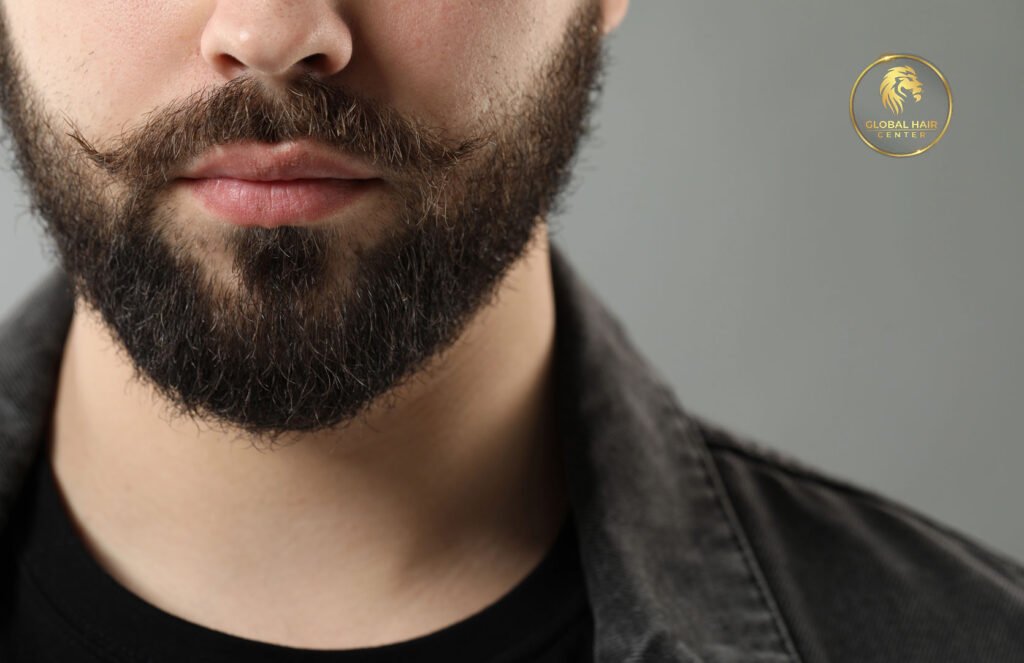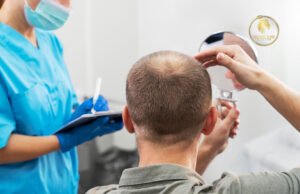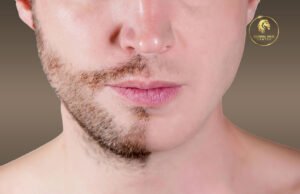From Patchy to Pristine: Exploring the World of Beard Hair Transplants and How They Can Transform Your Look

From Patchy to Pristine: Exploring the World of Beard Hair Transplants and How They Can Transform Your Look
For many men, a full and well-groomed beard is a symbol of masculinity and style. However, achieving the perfect beard can be a challenge, especially for those with patchy or sparse facial hair.
Fortunately, advancements in cosmetic procedures have made it possible to transform even the patchiest of beards into a pristine masterpiece.
In this comprehensive guide, we will explore the world of beard hair transplants, from understanding the procedure to exploring its transformative potential.
Join us as we embark on a journey to discover how beard hair transplants can revolutionize your look and boost your confidence to new heights.
The Quest for the Perfect Beard
Before delving into the intricacies of beard hair transplants, it’s essential to understand the significance of facial hair in modern culture. From ancient civilizations to contemporary trends, facial hair has long been associated with masculinity, virility, and individual style.
For many men, achieving the perfect beard is more than just a grooming routineو it’s a statement of identity and self-expression.
However, factors such as genetics, hormonal imbalances, and lifestyle habits can contribute to patchy or uneven beard growth, leaving some men feeling frustrated and self-conscious about their appearance.
Understanding Beard Hair Transplants
Beard hair transplant, also known as facial hair transplantation, is a cosmetic procedure designed to restore or enhance facial hair density and coverage. The procedure involves harvesting hair follicles from a donor site, typically the back of the scalp, and transplanting them into the beard area.
By redistributing healthy hair follicles to areas with sparse or patchy growth, beard hair transplants can create a fuller, more aesthetically pleasing beard. Unlike temporary solutions such as topical creams or supplements, beard hair transplants offer a permanent and natural-looking solution for achieving the perfect beard.
Who is a Candidate for Beard Hair Transplants?
While beard hair transplants can be a game-changer for many men, not everyone is a suitable candidate for the procedure. Ideal candidates for beard hair transplants include individuals with:
- Sparse or patchy beard growth.
- Scarring or bald patches in the beard area.
- Realistic expectations about the results of the procedure.
Before undergoing a beard hair transplant, individuals should consult with a qualified and experienced cosmetic doctor to determine candidacy and discuss treatment goals.
The Procedure
Beard hair transplant is typically performed as an outpatient procedure under local anesthesia. The process involves several key steps:
Consultation and Planning
During the initial consultation, the doctor will assess the patient’s facial anatomy, beard growth patterns, and desired outcomes. A customized treatment plan will be developed based on these factors.
Hair Harvesting
Hair follicles are harvested from the donor site using either follicular unit extraction (FUE) or strip harvesting techniques. FUE involves extracting individual follicular units using a small punch tool, while strip harvesting involves removing a strip of tissue containing hair follicles from the donor area.
Graft Preparation
The harvested follicles are carefully dissected and prepared for transplantation. The doctor selects follicular units of the appropriate size and quality to achieve natural-looking results.
Transplantation
Using specialized instruments, the doctor implants the prepared follicular units into the recipient sites in the beard area. The placement of grafts is meticulously planned to ensure proper distribution and density.
Post-Procedure Care
After the procedure, patients are provided with instructions for post-operative care, including wound care, activity restrictions, and medication management. Follow-up appointments may be scheduled to monitor healing and assess progress.
Recovery Process
Following a beard hair transplant, patients can expect a gradual recovery process. In the immediate post-procedure period, patients may experience some discomfort, swelling, and minor bleeding. However, pain medication and cold compresses can help alleviate these symptoms.
In the first few weeks after the procedure, the transplanted hair follicles may shed, which is a normal part of the hair growth cycle. This shedding is temporary, and new hair growth will show after some time.
Risks and Considerations
While beard hair transplants are generally safe and effective, like any surgical procedure, they carry certain risks and considerations, such as:
- Scarring: Although modern techniques aim to minimize scarring, some degree of scarring may occur at the donor and recipient sites. Proper wound care and adherence to post-operative instructions can help minimize the risk of visible scarring.
- Infection: As with any surgical procedure, there is a risk of infection at the surgical sites. Patients should follow all post-operative care instructions to reduce the risk of infection and promote optimal healing.
- Uneven Growth: In some cases, the transplanted hair follicles may not grow uniformly, resulting in uneven or patchy beard growth. Revision procedures may be necessary to address these issues.
Consultation and Follow-Up
Before undergoing a beard hair transplant, it’s crucial to schedule a consultation with a qualified and experienced cosmetic doctor.
During this consultation, the doctor will assess your candidacy for the procedure, discuss your treatment goals and expectations, and address any questions or concerns you may have. Additionally, follow-up appointments may be scheduled to monitor your progress and ensure optimal healing and results.
Cost Considerations
The cost of a beard hair transplant can vary depending on factors such as the extent of the procedure, the doctor’s experience and expertise, and the geographic location of the practice. It’s essential to obtain a detailed cost estimate during your initial consultation, including all fees associated with the procedure, follow-up appointments, and any additional treatments or medications.
Benefits of Beard Hair Transplants
Beard hair transplants offer numerous benefits for men seeking to enhance their facial appearance and confidence, including:
- Natural-Looking Results: Beard hair transplants can yield natural-looking results that seamlessly integrate with existing facial hair.
- Customized Treatment: Each beard hair transplant procedure is tailored to the individual patient’s needs and goals, ensuring personalized and pleasing outcomes.
- Permanent Solution: The transplanted hair follicles are genetically resistant to hair loss, making beard hair transplants a long-lasting solution for achieving a fuller, thicker beard.
- Minimal Downtime: While some initial redness and swelling may occur, most patients can resume their normal activities within a few days to a week after the procedure.
- Improved Confidence: A fuller, thicker beard can enhance facial symmetry and proportions, leading to increased self-esteem and confidence in social and professional settings.
Conclusion
In conclusion, beard hair transplants offer a transformative solution for men seeking to achieve a fuller, thicker beard and enhance their facial appearance.
By understanding the procedure, benefits, recovery process, and maintenance considerations, individuals can make informed decisions about pursuing beard hair transplants and unlock their path to a more confident and stylish appearance.
With the guidance of a qualified cosmetic doctor and a commitment to post-operative care, achieving the beard of your dreams is well within reach.
Say goodbye to patchy or sparse facial hair and hello to a fuller, more masculine beard with beard hair transplants. Contact Global Hair now to achieve the full beard you’ve always dreamed about.

Hair Transplant in UAE
Hair Transplant in UAE 2025: A Comprehensive Guide for Beauty and Hair Care Lovers The Emirates have witnessed a.
Read More
Hair Transplant in Installments in the.
Introduction Hair loss affects millions of men and women around the world. In the UAE, where appearance and self-confidence are.
Read More

